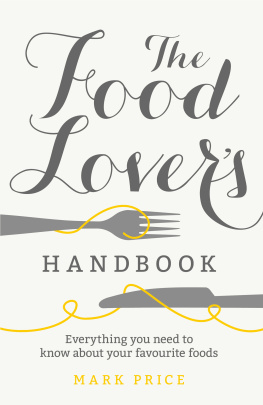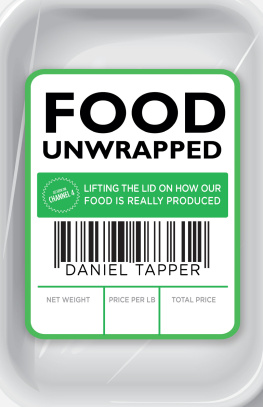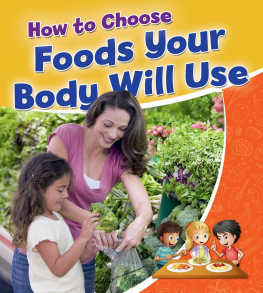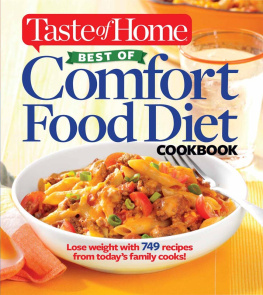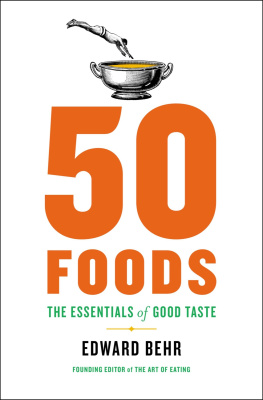Contents
About the Book
Which tea is so precious its buds are cut with golden scissors?
How do you make the perfect cup of coffee?
Which champagne should you try before you die?
Where do you find the worlds best beef?
What is the best way to cook dried pasta?
Which everyday item comes from one of the oldest known cultivated trees in the world?
This treasure trove of information for food lovers everywhere by Mark Price, self-confessed chubby grocer and industry insider, covers all your favourite foods, from eggs to caviar.
About the Author
Mark joined the John Lewis Partnership in 1982 as a graduate trainee and had numerous roles during his 34 years with the organisation. He spent 17 years on the board of Waitrose, becoming Managing Director in April 2007 and held this post until March 2016; he was also Deputy Chairman of the John Lewis Partnership from 2013.
Mark was appointed Chairman of Business in the community in January 2011, a post he held for four years, and was also appointed Chairman of the Princes Countryside Fund in 2010. Mark will publish a number of books during 2016 and beyond.
Foreword
One of my earliest memories of growing up in the 1960s is of the huge Christmas hamper my father received every year.
We lived in Crewe and Dad, who at one time had owned a small grocery store in the town, now ran a wholesale business delivering biscuits and snacks to shops, schools and leisure centres across Cheshire. The hamper was an annual thank you from one of his suppliers.
I can still vividly recall the excitement I felt when this seemingly vast wicker basket arrived and we would open the lid to find it filled to the brim with a treasure trove of biscuits, confectionery, pickles, preserves, cooked meats and all manner of exotic delicacies.
In my adult life, Ive been fortunate enough to have a career that has provided me with that exact same thrill over food on so many occasions. As marketing director, retail director and for the last nine years managing director of Waitrose, considered by many to be the best food retailer in the United Kingdom, I have enjoyed some extraordinary experiences.
I have stood on a river bank in Iceland and eaten wafer-thin melt-in-the-mouth pieces of delicately flavoured raw salmon sliced from a fish Id caught just minutes earlier. Ive driven in the rain along red-brown dirt roads to reach a coffee plantation high in the Blue Mountains of Jamaica and, when the rain cleared, been staggered by the jaw-dropping views across that beautiful island.
Ive feasted on a steak bigger than my plate, and barbecued over the glowing embers of old vines in an Argentinian vineyard, while drinking the amazing Malbec made on the estate.
I have visited suppliers and growers across the 60 countries that Waitrose imports from and exports to, and I have spent time with the worlds top chefs and food writers. Whenever I visit a restaurant for the first time, I ask, What are you famous for? and then order that.
I sample as many different types of food as I can, and pride myself on having always tried each new line that comes into Waitrose. In fact, of all the foods I have ever tried from all over the world, I can think of only one that I actively dislike the durian. This soft, fleshy fruit, unaccountably popular in south-east Asia, smells of rotten meat and doesnt taste any better. However, my point is that over the years I have learned a great deal about food and drink.
I first got the idea for this book in Christmas 2014, after a discount food chain announced it would be selling caviar at 9.99 for 20g. The press lapped up the news. Huge banner headlines declared how remarkable this was, comparing the price to caviar being sold in a top London food emporium at 150. It was a repeat of a story that had played out over a range of foodstuffs from beef and salmon to lobster tails, wine and champagne. In every case the somewhat breathless message from the media was that the discount chain was performing the equivalent of a retailing miracle by selling identical goods to those found in the finest shops but at a fraction of the price.
What they didnt acknowledge, or were perhaps reluctant to say, is the fact that the discounters caviar came from a type of hybrid-cross sturgeon in China. These sturgeon are prolific and so the caviar is abundant and costs just 500 per kilogram. The much-derided top London fine-food emporium, on the other hand, sold Beluga caviar. Beluga is farmed for maximum taste on dedicated farms in far more limited amounts and as a result costs 5,000 per kilogram. The resulting products are so different they could be two entirely different foodstuffs, and to compare the two is meaningless.
The treatment of this food story got me thinking. Why are people so prepared to turn a blind eye to the facts when it comes to groceries? Most people can explain very clearly why one broadband provider is better, and therefore costs more, than another. It is similarly straightforward to explain why a fashionable, designer coat is considerably more expensive than a mass-produced one from a high-street chain. No one would have much trouble listing a fair few reasons why a Ford car costs less than a Bentley. Yet, sadly, these same people are less able to articulate why fish, meat, tea or coffee have wildly different price points. There appears to be a tacit acceptance that one type of produce is all the same, regardless of variable factors such as quality. Food, it seems, has become a commodity judged almost exclusively on price, and consumers may well confuse price with value.
Perhaps it is time to redress the balance and take a more thoughtful approach to the food and drink we buy.
This book sets out to explain why foods cost what they do, from the cheapest fare to top-of-the range goodies. It is a distillation of the knowledge I have acquired over almost two decades at Waitrose and a lifetime of being interested in food.
I have been careful not to use subjective judgements over taste. All our taste buds are wired differently and in some cases an individual may well prefer the taste of something less expensive. My aim is to explain objectively why price variants exist, so when shopping for everyday use or for a special occasion, you can do so knowing exactly what you are getting for your money. I also hope, once you have read the incredible stories of the foods in this book, it prompts you to create a bucket list of items you now just have to find and try.
Organic:
A General Note
Throughout this book I refer to different farming methods and the impact they have on the cost of producing food. To avoid repetition in every chapter it may be useful to begin with a note clarifying the status of organic.
Organic food is not always more expensive, but organic farmers generally charge more for their produce because many organic farming practices take longer and produce lower yields. It is more labour-intensive than conventional agriculture and fields have to be taken out of food production while they go through three years of organic conversion, or fertility building, which is a slower process than using artificial fertiliser.

